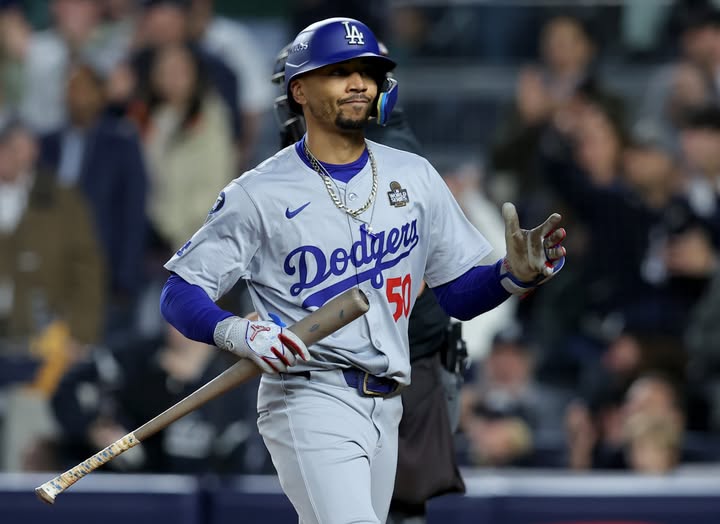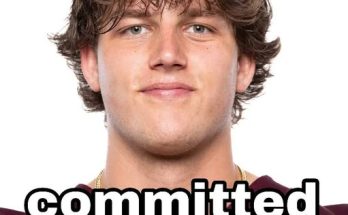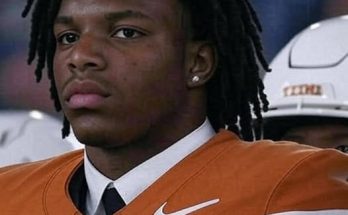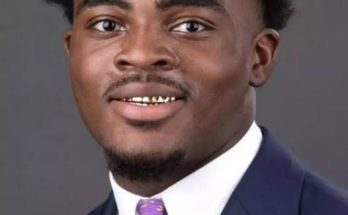The Los Angeles Dodgers have never been a franchise afraid to innovate. Whether it’s building a lineup packed with MVPs or blending analytics with old-school grit, the Dodgers operate with a championship-or-bust mentality. So when General Manager Brandon Gomes confirmed that superstar Mookie Betts will be the team’s starting shortstop in 2025, it signaled more than a mere lineup adjustment — it marked a philosophical shift and the dawn of a bold experiment.
Betts, a six-time Gold Glove winner in right field and a former MVP, moved to the infield in 2023 with surprisingly seamless success. After playing second base and some shortstop during the 2024 campaign, the Dodgers are now going all in. Shortstop is Mookie’s position for 2025.
A Superstar’s Evolution
When Betts arrived in Los Angeles in 2020 after a blockbuster trade with the Boston Red Sox, he was viewed as the best right fielder in baseball. His elite defense, powerful bat, and base-running instincts made him a five-tool marvel. In his first season, he helped lead the Dodgers to a World Series championship — their first since 1988 — and validated the massive extension he signed shortly after arriving in LA.
Over the next few seasons, Betts continued to be a cornerstone in right field. But something began to change in 2023. A spate of injuries to infielders — and Mookie’s own stated desire to play more second base — prompted manager Dave Roberts to get creative. Betts started appearing at second base, then shortstop, then back to second.
What began as a flexibility experiment quickly became a realignment strategy. Betts, to the surprise of many, looked fluid in the middle infield. His instincts, arm strength, and baseball IQ translated well. And the Dodgers took note.
Gomes’ Confirmation: A New Chapter
This offseason, speculation had swirled around how the Dodgers would align their infield, especially after adding high-priced talent like Shohei Ohtani and Yoshinobu Yamamoto. Then came the blockbuster acquisition of Tyler Glasnow. With all eyes on the rotation and lineup power, the infield alignment remained a mystery — until now.
“Yeah, Mookie’s going to be our shortstop,” Gomes told reporters at Camelback Ranch during spring workouts. “He’s committed to the position, he’s worked his tail off, and we’re confident in what he brings to the table defensively.”
Gomes noted that Betts spent the offseason honing his shortstop fundamentals, specifically working on his lateral movement, footwork, and most notably — his throwing mechanics from deep in the hole.
“Mookie understands the demands of the position,” Gomes said. “He’s not just playing shortstop — he’s becoming a shortstop.”
The Challenge of the Position
Shortstop is one of the most demanding positions in baseball. It’s the anchor of the infield, requiring lightning-quick reflexes, a strong arm, and the ability to make plays from awkward angles and on the move. It’s where defensive lapses get magnified and gold gloves are earned the hard way.
Betts has played fewer than 70 games at shortstop in his MLB career, which raises legitimate questions about durability and consistency at the position. But there’s historical precedent for athletic outfielders transitioning successfully into the infield — and Mookie Betts is no ordinary athlete.
Standing just 5’9″, Betts blends compact power with quick-twitch agility. He’s been praised for his basketball-like footwork (he was once a high school point guard) and his relentless preparation. His glove work at second base has already drawn praise, and while shortstop is a tougher ask, many around the game believe he’s up for it.
The Dodgers’ Infield in Flux
Betts moving to shortstop creates a domino effect throughout the Dodgers’ infield. Gavin Lux, who returned from a torn ACL last year but struggled at short, now slots in more comfortably at second base — his natural position. The move could revitalize Lux’s bat, as he no longer has to deal with the psychological weight of playing shortstop at a high level.
Third base appears to be a competition between Max Muncy and rookie Michael Busch, depending on how the spring develops. And first base? That’s firmly held down by Freddie Freeman, whose Gold Glove defense and consistent offensive output provide a crucial anchor.
Gomes’ announcement also puts pressure on Miguel Rojas, the veteran utility infielder known for his glove and leadership. Rojas will likely become a late-inning defensive replacement and occasional spot starter, especially if Betts needs days off.
Strategic Gamble or Stroke of Genius?
There are two schools of thought when it comes to Betts at shortstop. The first sees it as a masterstroke — a way to maximize roster flexibility and inject elite athleticism into the game’s most important infield position. The second sees it as an unnecessary risk: why move an elite outfielder — arguably the best in the sport — to a position he’s not fully mastered?
Gomes and Roberts are clearly in the first camp.
“Mookie makes our team better wherever he plays,” Roberts said. “He’s one of the smartest players I’ve ever managed. And he wants to play short. That kind of commitment matters.”
There’s also the issue of team chemistry. Betts is one of the clubhouse leaders — a soft-spoken but fierce competitor whose work ethic sets the tone. Giving him the keys to shortstop isn’t just a tactical decision; it’s an endorsement of leadership.
Mookie’s Offseason Transformation
According to team sources, Betts has spent most of the offseason working with Dodgers infield coach Dino Ebel and private trainers. He’s reportedly dropped about five pounds to improve his range and has drilled backhand pickups, double-play turns, and throw mechanics almost daily.
He even worked out with former MLB shortstops, including Jimmy Rollins and Omar Vizquel, to refine his footwork.
“This wasn’t just a January thing,” one Dodgers staffer told The Athletic. “Mookie’s been grinding since November. He wants to be elite — not just decent — at shortstop.”
Betts, as expected, has played down the attention. “I just want to help the team win,” he said during a recent media scrum. “If that means playing shortstop every day, then I’m ready.”
What the Numbers Say
Statcast metrics show that Betts posted an above-average Outs Above Average (OAA) rating in limited shortstop action last year. His arm strength ranked in the top 15% among infielders, and his reaction time was elite. The biggest area of concern? Plays to his backhand side and throws on the run — both focal points of his offseason training.
The Dodgers are also counting on their strong infield analytics team to position Betts effectively. In today’s game, data-driven positioning can help cover for some of the traditional range issues that used to plague converted infielders.
Still, the margin for error is razor-thin.
“Shortstop is a grind,” said former Dodger and longtime shortstop Rafael Furcal. “Every pitch, you’re moving. Every game, you’re tested. If Mookie can handle that physically and mentally, he’s going to be special.”
Big Picture: A Championship Bet
The Dodgers are not rebuilding. They’re not retooling. They’re going for it. With a payroll north of $300 million and a roster that includes Betts, Ohtani, Freeman, Will Smith, and Walker Buehler, anything short of a World Series appearance will feel like a failure.
That’s what makes this move so intriguing — and so bold.
By putting Betts at shortstop, LA isn’t playing it safe. They’re gambling on greatness, trusting in Betts’ adaptability, and leveraging their organizational depth. If it works, the Dodgers may have redefined positional value in the modern era.
Fan Reaction: Mixed but Hopeful
Unsurprisingly, fan reactions have ranged from cautious optimism to outright skepticism. On social media, some Dodgers fans have praised the club for embracing versatility. Others worry that Betts could wear down over a 162-game grind at a physically punishing position.
Local sports radio has been buzzing. One caller on KLAC-AM summed it up well: “I love Mookie, but we already had the best right fielder in baseball. Why mess with that?”
Another caller, more optimistic: “This is like LeBron switching to point guard mid-career. Mookie can do anything. Let him cook.”
What’s Next?
The next few weeks of spring training will offer the first real test. Betts will see the bulk of innings at short, and how he responds — defensively, physically, and mentally — will shape the Dodgers’ early season trajectory.
If Betts thrives, the Dodgers could roll out the most dynamic infield in the National League. If he struggles, LA has enough depth to adjust on the fly. But make no mistake: the team is committed to the plan.
“We’ve got Mookie’s back,” Freeman said. “He’s one of the best teammates I’ve ever had. If anyone can pull this off, it’s him.”
Final Word
It’s rare to see a player of Betts’ caliber and pedigree take on a challenge like this mid-career. But that’s what makes him special — and what makes this move so compelling. It’s not just about defensive realignment; it’s about rewriting the rulebook on what’s possible for a superstar athlete.



